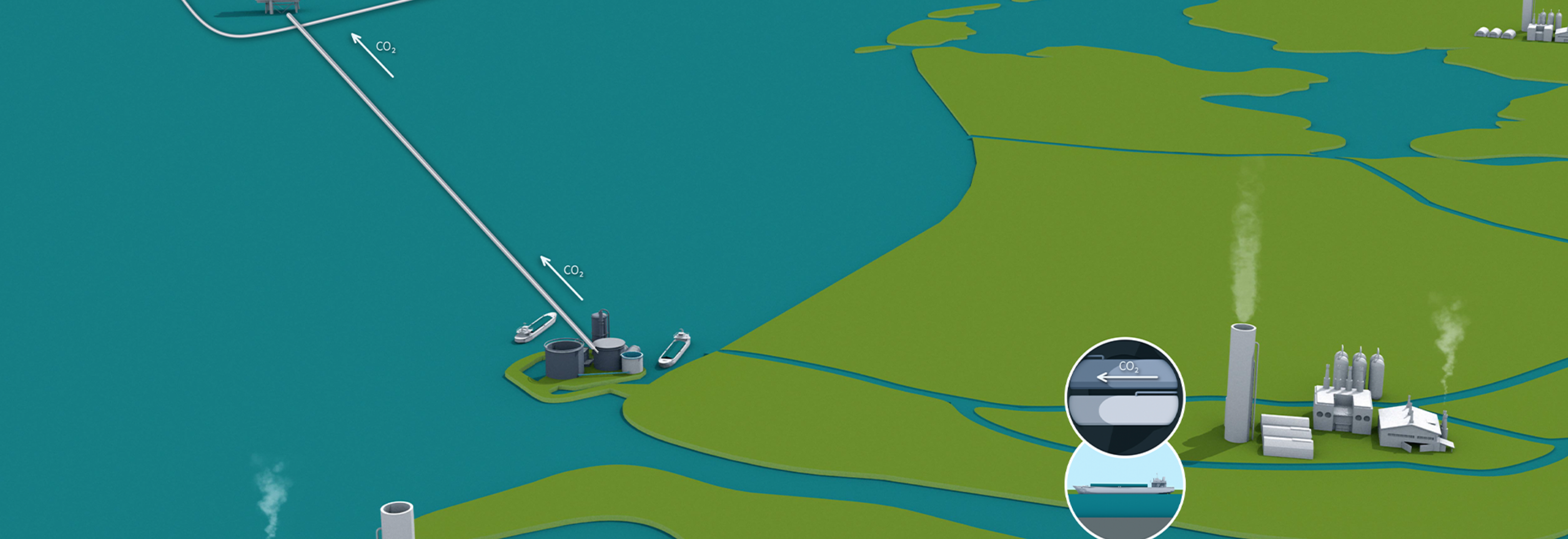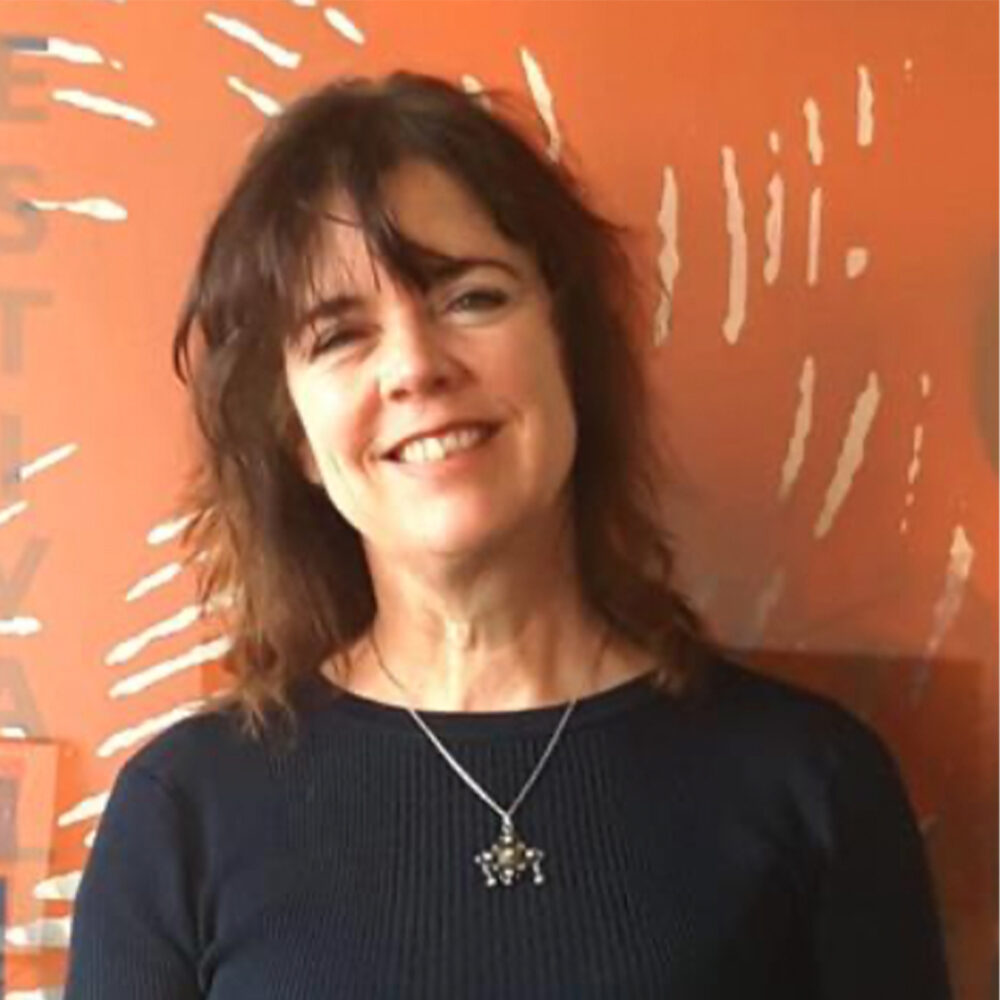

Update on Aramis pipeline realisation
A 230-kilometer pipeline connecting the Maasvlakte to the distribution platform will soon cross the busy North Sea. From the platform, a network of smaller pipes will feed into the depleted gas fields. From carbon capture to offshore storage, an Environmental Impact Assessment (EIA) will provide insight into the environmental impact of the entire Aramis CCS chain. The EIA is investigating various options for the pipeline route and landing location. Constans van Munster, senior environmental engineer at TotalEnergies, is coordinating all licensing procedures and associated environmental studies. She provides us with an update on the progress so far.
There are two options for the starting point of the pipeline. Constans points to these on a digital map of the Maasvlakte: “The first option is to the north, at the point commonly known as the shark-fin. There’s a lot of space there.” The alternative landing location starts to the west of the Maasvlakte, at the same place where the Porthos pipeline departs, another CO2 storage project. Aramis and Porthos are currently looking into the potential for collaboration.
Whichever location is chosen, it won’t matter to Aramis customers. “They will deliver the CO2 either liquefied by ship or as a gas via a pipeline across the Rotterdam port area”, explains Constans.
The EIA (MER in Dutch) will determine which of the two landing locations is the better option. “The environmental impact is the key factor, but there are many other things to take into account, not least costs, technical feasibility and future viability.”

Constans van Munster - Senior environmental engineer at TotalEnergies
Location selection and licensing
Constans is acutely aware that environmental studies and permit applications are complex and time-consuming: “You can’t just lay a pipeline under the sea that runs in a straight line. It’s not that simple. There are many things to consider, including sea defences, busy shipping lanes, existing cables and pipes, Natura 2000 conservation areas, sand mining, military exercises and wind farms.”
She points to the drawings showing the pipeline as it leaves the Port of Rotterdam and works its way up along the coastline. “We want to avoid obstacles as much as we can to minimise any impact on the surroundings”, says Constans. “To ensure all environmental aspects are taken into account, we are conducting research with various partners. These include ecologists, the maritime sector and the Department of Waterways and Public Works (Rijkswaterstaat). Safety always takes precedence.”
Construction conditions and restrictions
Construction of the pipeline will be subject to similar conditions and restrictions. “You need to consider many aspects, including maritime security, underwater noise pollution and, of course, the impact on flora and fauna. We are therefore exploring the possibilities for nature-enhancing construction”, explains Constans.
Seabed surveys are also necessary to detect any archaeological sites or areas where explosives from the Second World War may be present. She notes: “Being so close to Rotterdam, there is a substantial risk of unexploded bombs.”
Furthermore, one of the project teams is working on minimising nitrogen emissions from equipment during construction – “For instance, by employing as many electricity powered techniques as is practical.”
Contact with stakeholders
Constans safeguards the progress of all environmental studies and permit applications by keeping in contact with the various internal and external stakeholders, such as the technical team, ecologists, archaeologists and the permit managers at Porthos and CO2next (the liquid CO2 storage terminal project on the Maasvlakte).
Other stakeholders involved are the Department of Waterways and Public Works, the Ministry of Economic Affairs and Climate Policy (EZK) and the Municipality of Rotterdam.
Constans studied chemical engineering and obtained a master’s in geochemistry, and her technical knowhow comes in useful during stakeholder meetings. She spent many years working as an environmental consultant for circularity and land use planning for the chemical industry, shipyards and container terminals prior to her current role. She says, “I understand the impact our choices have on all aspects of the surrounding areas and can explain that clearly to stakeholders.”
Official permit
In early 2022, the Government Gazette (Staatscourant) announced the start of the Aramis project, and all areas to be surveyed in the EIA were published several months later. Those with an interest in the project had six weeks to respond.
Constans explains: “Everybody could ask for certain factors to be considered or investigated. Eight responses were submitted. An independent committee working on behalf of the Dutch Ministry of Economic Affairs and Climate Policy is assigned with assessing the quality and comprehensiveness of our EIA and has incorporated these responses in its advice. Our report needs to meet the requirements and preconditions stated in the advice.”
The ministry will make a final decision on the landing location and pipeline route this autumn. Constans continues: “We call this the preferred option. We will be starting the engineering phase during that time, including finalising the designs. And then we can start ordering all the required materials.”
The project partners aim to submit the permit applications and the EIA by the first quarter of 2024. “We hope this means official licensing will be in place by the first quarter of 2025. We should be able to start construction soon after.”
For more information on the environmental studies, please click on the following link: Notitie reikwijdte en detailniveau voor het milieueffectrapport (PDF).

